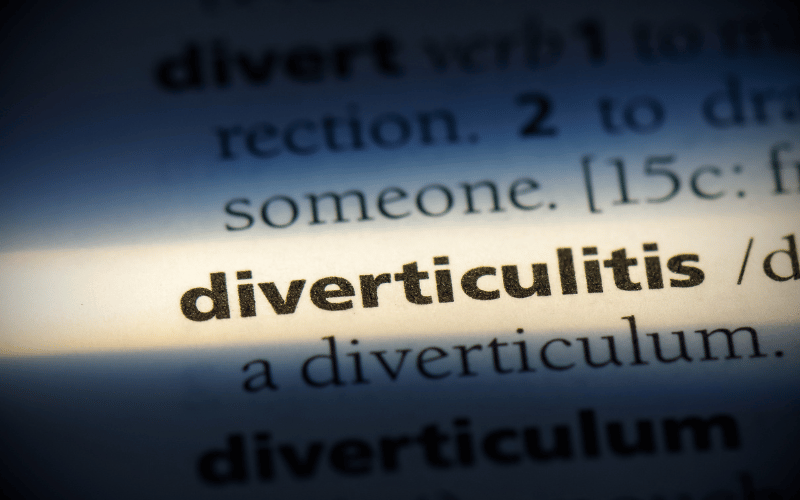Cause 3: Diverticulitis

Diverticulitis is a condition wherein small pouches, coined as diverticula, in the colon or large intestine become inflamed or infected. The very existence of these pouches, forming through weak spots in the intestinal walls, is called diverticulosis. It’s when they get inflamed or infected that the situation escalates to diverticulitis.
The root causes of diverticulitis remain a subject of research, but a few aspects are evident. Age plays a role; as people grow older, they’re more susceptible. An inadequate intake of dietary fiber is also believed to contribute, leading to harder stools that strain the colon during bowel movements. This straining can potentially cause the diverticula.
When diverticulitis flares up, the symptoms can range from mild to severe. There’s often pain in the lower left side of the abdomen, which can be persistent and worsening. Blood in the stool, generally bright red or maroon, can signal diverticulitis. Accompanying this are other symptoms like nausea, vomiting, fever, and chills, along with a change in bowel habits.
The first line of defense against diverticulitis usually includes antibiotics to tackle the infection. In conjunction with this, a liquid diet might be recommended to give the bowel some rest. Pain relievers can also be prescribed to manage discomfort. In more severe or recurrent cases, surgical interventions may be required, either to remove the affected part of the colon or to drain an abscess if one has formed.
Taking proactive steps, like consuming a high-fiber diet and drinking ample water, can prevent diverticula formation in the first place. Regular exercise and avoiding the use of NSAIDs can further decrease the risk. Importantly, anyone suspecting they have diverticulitis should seek immediate medical attention, as complications can be severe. (3)